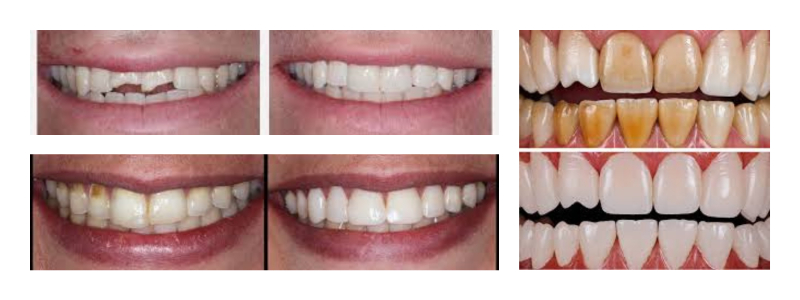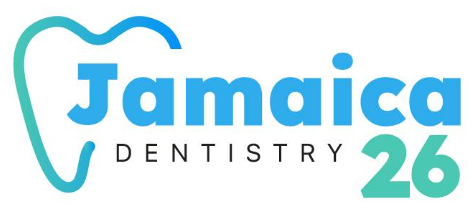Dental Bonding

Dental bonding is a popular cosmetic dental procedure designed to improve the appearance of your smile by repairing minor imperfections in your teeth. Using tooth-colored composite resin, dentists can fix issues such as chips, cracks, gaps, or discoloration in a quick and minimally invasive way. This procedure is often completed in a single visit, making it a convenient choice for many patients. It not only enhances the aesthetics of your teeth but also helps restore their function. Dental bonding is a cost-effective solution that provides natural-looking results, making it an ideal option for those seeking a simple smile upgrade.
What is Dental Bonding?
A cosmetic treatment in which a white resin is used to make your teeth white and shiny to restore your smile. The dentist roughens the surface of your teeth with acid to adhere the resin material. A specific blue light is used to harden the resin. This process improves your smile by fixing imperfections. This treatment is simple, non-invasive, and does not require any drilling for fast and beautiful results.
Jamaica 26 Dentistry offers dental bonding, a simple way to restore a confident smile without undergoing complex procedures.
Types of Dental Bonding
- Direct Dental Bonding
Direct dental bonding is the most common treatment to improve aesthetics. In this method, a tooth-colored resin is directly applied to the teeth. A tooth-colored composite resin directly applied to your tooth. It is used to treat minor problems like chips and discoloration. The dentists applied resin, hardened it with blue light, and polished it to match the surrounding teeth
- Indirect Dental Bonding
This type is used for complex restorations like veneers, crowns, or bridges. These are custom-made bondings like veneers that are made in a dental lab. This process is more expensive, time-consuming, and durable.
Candidates for dental bondings?
Dental bonding is a perfect cosmetic solution to minor dental flaws. It is not a one-size-fits-all solution. The ideal candidates for dental bonding are those who have healthy teeth and gums or want to address minor cosmetic problems.
- Minor chips are cracks on the edge of teeth.
- Gaps between teeth.
- To solve discoloration and remove stains.
- Misshapen or short teeth.
When Is Dental Bonding Recommended?
Dental bonding is highly recommended for minor to moderate cosmetic issues. The dentist recommends dental bondings if you want:
- Repair chipped or cracked teeth to enhance your smile.
- To improve the appearance of discolored teeth.
- To fill the gap between teeth.
- To protect the exposed roots
- To prevent enamel worn down
Why dental bonding?
- Non-invasive: Dental bonding does not require removal of enamel like veneers or crowns and also does not require anesthesia for treatment. That’s why it is non-invasive.
- Quick Results: The procedure takes 30 to 60 minutes and transforms your smile in just one visit.
- Affordable: This is accessible to everyone, and it costs less than veneers or crowns.
- Reversible: It is a reversible and repairable procedure because a small amount of enamel is removed.
- Customized: Dental bonding is customized and made in dental labs. The resin is color-matched to your natural teeth to provide a natural look.
Treatment Process of Dental Bonding
Consultation and Shade Selection
Visit the dentist to fix cracked chipped or crooked teeth. The dentist examines your teeth, discusses your goals, assesses your oral health, and selects a resin shade that closely matches your natural tooth color.
Tooth Preparation
This procedure is painless and does not require any anesthesia. The tooth is gently etched, and a conditioning liquid is applied that makes the surface slightly rough for the resin to adhere.
Application of Resin
The dentist applied composite resin and molded and shaped the resin to get the desired result. It is used to fill the gap, repair chips and reshape the teeth.
Curing the Material
The dentist uses blue light to harden the resin. The light activates the bonding agents to make the resin stronger and more durable.
- Final Polishing
The dentist adjusts the bonding material and polishes it to achieve a natural look. Bonded teeth are trimmed, shaped, and polished for a natural appearance. The final look matches your natural teeth.
Benefits of Dental Bonding
- Provide a more attractive, aesthetic and beautiful smile
- It doesn’t require any anesthesia.
- It is a fast and quick treatment and is completed in a single visit.
- Minimal preparation is required to preserve the natural tooth structure.
- The appearance of teeth will be natural and shiny.
- Visible enhancement as soon as the treatment ends.
Dental bonding on molars
Dental bonding is used in cosmetic dentistry on the front teeth but can also be used on molars. Molars are used for chewing and produce high stress and pressure when chewing. That’s why bonding on molars is not recommended for complex repair, and is only used for minor cracks. For extensive damage or larger cavities on molars, inlays, onlays or crowns are the best choice.
Dental bonding vs Veneeres
Dental Bonding
Dental bonding is a simple and cost-effective cosmetic treatment used to repair minor imperfections. During this treatment, a tooth-colored white composite resin is directly applied onto the tooth’s surface to fix issues like chips, cracks, gaps, or discoloration. The dentist shapes and polishes the resin to match your natural tooth color, then hardens it with a blue light. It is usually completed in a single visit and requires little to no enamel removal. While it’s not as durable as other treatments, it’s an excellent solution for small cosmetic improvements.
Dental Veneers
Dental veneers are thin and personalized shells made of porcelain or composite material that cover the front surface of the teeth. They are used to improve the appearance of stained, misshapen and misaligned teeth. Veneers require a small amount of enamel to be removed from the natural tooth to ensure a proper fit. Though more expensive and time-consuming than bonding, veneers offer a long-lasting, stain-resistant, and highly aesthetic result, making them a popular choice for a flawless, radiant smile.
While veneers offer superior strength and stain resistance, dental bonding is the perfect choice for those seeking a more conservative, affordable, and quick solution for minor aesthetic concerns.
Disadvantages of tooth bonding
Despite its benefits, dental bonding has a few limitations:
- Staining: Composite resin can stain over time, especially from coffee, tea, or smoking
- Durability: Less strong than crowns or veneers
- Maintenance: Requires touch-ups or replacement within a few years
- Not Suitable for Major Damage: Large cracks or wear may require crowns
- Can Chip Easily: Especially if used on teeth with high bite pressure
Cost of teeth bonding
The cost of dental bonding varies depending on the number of teeth treated, the complexity, the location and the dentist’s expertise. At Jamaica 26 Dentistry, the average cost of dental bonding is $100 to $600 per tooth, and if bonding is medically necessary, insurance may cover the cost with flexible payment plans.
How to care for bonded teeth
- Brush twice a day.
- Avoid staining foods like coffee, tea, and wine
- Avoid smoking tobacco
- Regular dental checkups.
- Avoid chewing hard objects like ice, pens, or nails.
- Wear a mouthguard at night while sleeping.
FAQs
Is dental bonding painful?
Dental bonding is a painless procedure. It involves working on the outer surface of the tooth and not near the nerve. Anesthesia is not required for this procedure. You might experience mild pressure from the material being shaped, but it’s rarely uncomfortable.
How long does dental bonding last?
Dental bonding can last from 5 to 10 years with proper dental care. Durability depends on the location of the bonding, your oral hygiene, and whether you avoid habits that can damage the material, like biting on hard objects.
Can bonded teeth be whitened?
No, the composite resin used in dental bonding does not whiten the teeth.
What should I do if my bonded teeth chip?
If your bonded teeth chip. The material can often be easily repaired or replaced.
How quickly can I see results with dental bonding?
Dental bonding provides immediate results. The procedure is completed in a single visit, and you will leave with a new, bright and improved smile.
